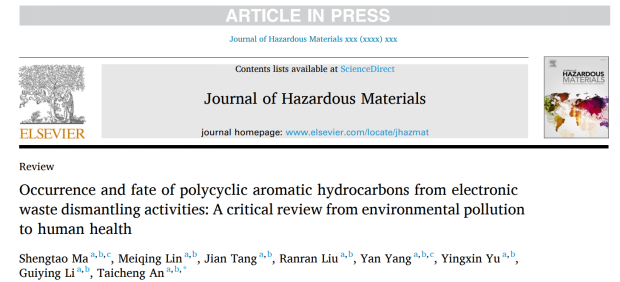《Occurrence and fate of polycyclic aromatic hydrocarbons from electronic waste dismantling activities: A critical review from environmental pollution to human health》

DOI:https://doi.org/10.1016/j.jhazmat.2021.127683
Graphical Abstract:

Abstract:
Electronic waste (e-waste) is one of the fastest-growing solid wastes and has become an urgent issue due to the potential adverse consequences of exposure to emitted toxic pollutants, especially for these occupational exposed workers and local residents. In this review, the environmental occurrences, emission characteristics, sources, and possible adverse effects of polycyclic aromatic hydrocarbons (PAHs) emitted from primitive e-waste dismantling activities are summarized. In general, the atmospheric levels of PAHs at typical e-waste sites, e.g., in Guiyu, China, have substantially decreased by more than an order of magnitude compared with levels a decade ago. The PAH concentrations in soil from old e-waste sites in China are also generally lower than those at newly emerged e-waste sites in India, Pakistan and Ghana. However, elevated concentrations of PAHs have been reported in human milk, hair and urine from the populations near these e-waste sites. Source apportionment both from bench-scale studies to field observations has demonstrated that the pyrolysis and combustion processing of electronic circuit board are mainly responsible for the emissions of various PAHs. In addition, some specific PAHs and their derivatives, such as triphenylbenzene, halogenated and oxygenated PAHs, have frequently been identified and could be considered as indicators in routine analysis in addition to the 16 U.S. EPA priority PAHs currently used.